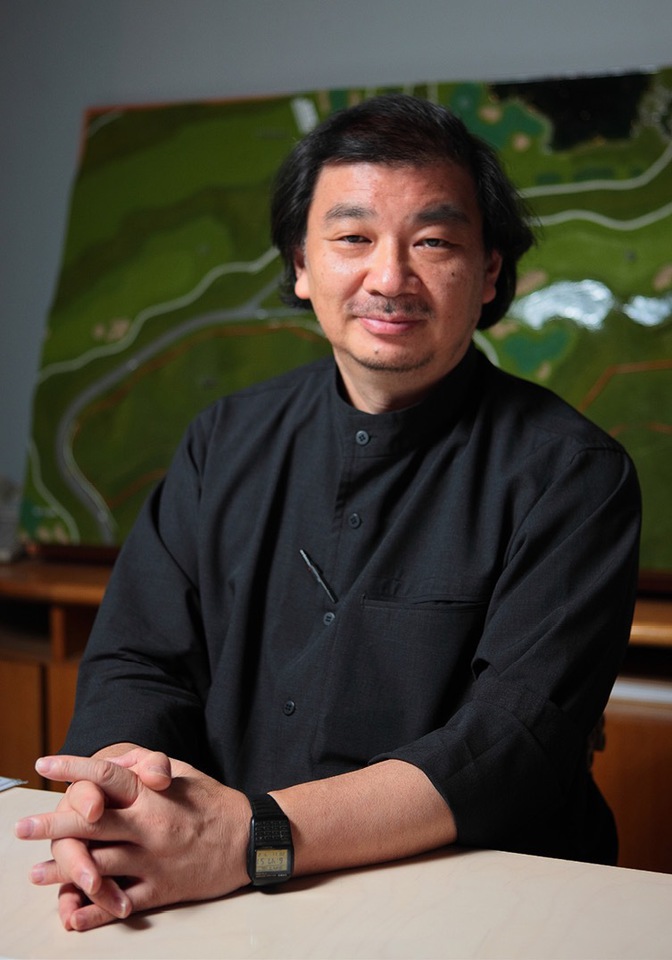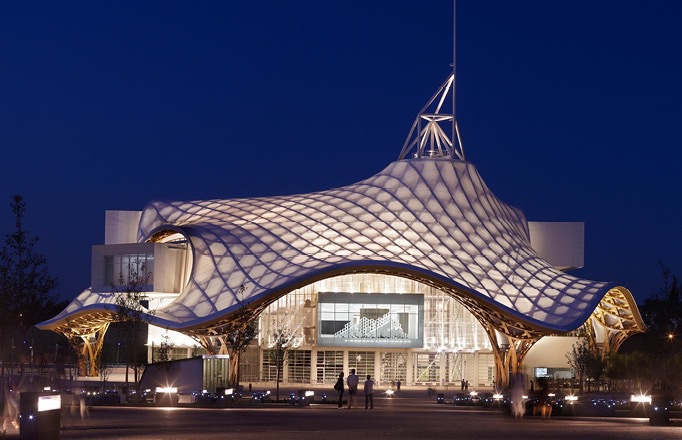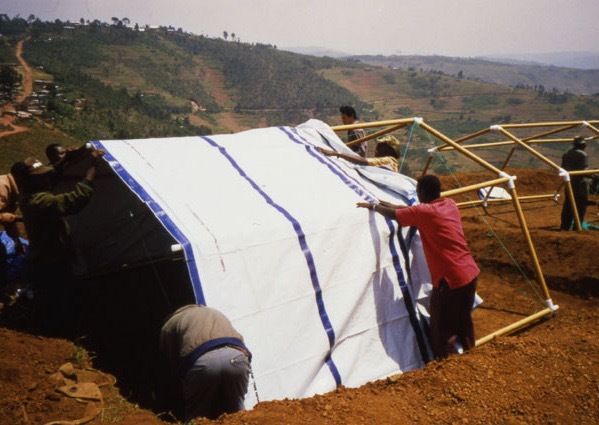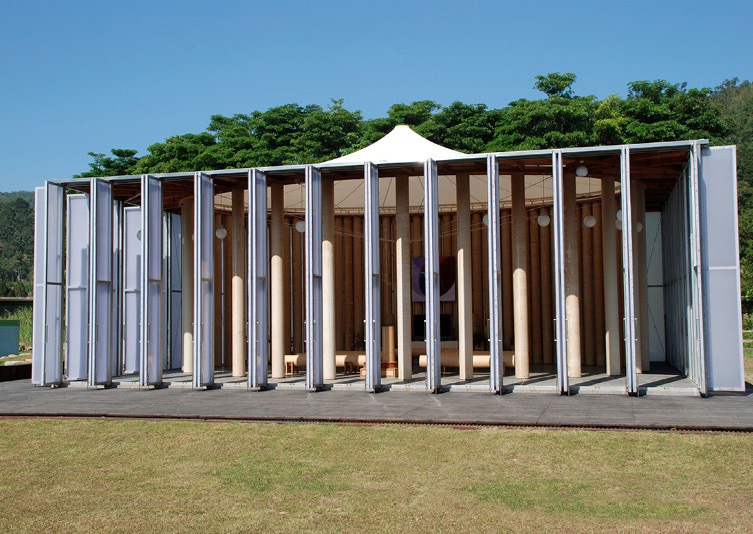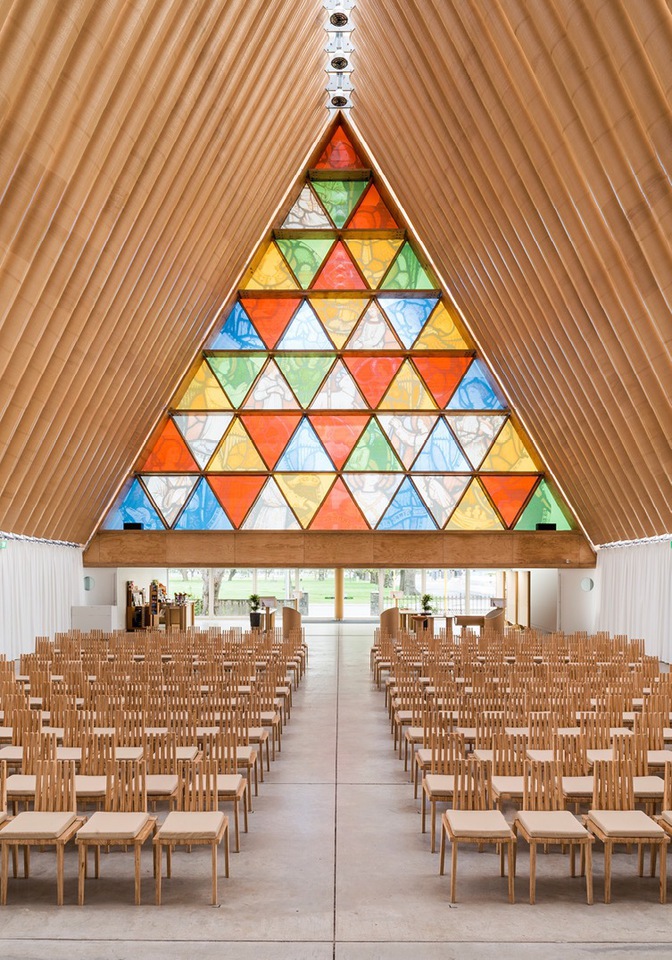Often referred to as the “Nobel Prize of architecture,” the Pritzker Architecture Prize is awarded to architects who have done remarkable work. In 2014, the prize was awarded to Japanese architect Shigeru Ban. His most important works include the Centre Pompidou-Metz in France and the Aspen Art Museum in the United States, but it was his relief efforts in disaster-stricken areas that won him the award. When asked about the reason for engaging in such efforts, Ban said, “An earthquake doesn’ t cause fatalities; the collapse of a building causes them. As an architect, I believe it is my responsibility to address this issue.” It is this conviction that drove him to become an “architect of action.”
One thing that makes him stand out is the unique building materials he uses. He incorporates bold ideas in his work, including using shipping containers, furniture, and even beer crates. But he is perhaps best known for his use of cardboard tubes made from recycled paper. They are readily available anywhere, lightweight, and recyclable. And treating them with fireproof and waterproof coating makes them an outstanding building material. He created the Japan Pavilion at Expo 2000 in Hanover, Germany, with cardboard tubes, and it attracted a great response.
Such efforts overlap with “ecological architecture,” a field that has gained prominence in recent years. However, “That was not my aim,” says Ban. “I was wondering whether there was a good alternative material to wood and came up with cardboard tubes.” He continues, “The idea came from the constraint of trying to cut building costs as much as possible.” The result was an ecological and sustainable design, and before he knew it, he found himself at the cutting edge of the field.
His disaster relief efforts began in Rwanda in 1994. Ban approached the Office of the United Nations High Commissioner for Refugees (UNHCR) on his own and proposed the idea of making temporary shelters for refugees with cardboard tubes and plastic sheets, which the office adopted. In 1995 he used cardboard tubes to rebuild a church in Kobe that had been destroyed by fire in the Great Hanshin-Awaji Earthquake. “If it is loved and cared for by the people who use it, a so-called ‘temporary’ structure can become a monument, something permanent,” says Ban. And, true to his words, the “Paper Dome,” originally built as a temporary church, was used with care for ten years. Then, in response to a request from an earthquake-stricken region in Taiwan, the structure was donated and shipped there, where it is loved by the local people to this day. This is what Ban strives for in his architecture.
Recently, he built the Cardboard Cathedral in Christchurch, New Zealand, which was struck by an earthquake in 2011. Locals expressed gratitude for the beautiful, warm building, saying that it “gave us hope” and “lifted our spirits.”
“For me, both standard architecture and temporary housing are projects equally worth doing,” explains Ban, “There is no difference between the two.” After the Great East Japan Earthquake, he built temporary three-story housing using shipping containers. Tenants praised the amazing workmanship, with one resident saying, “Although it’s supposed to be temporary, I want to live here forever.” At present, Ban is engaging in previously unthought-of projects. One example is working with a homebuilding company to develop a material that combines polyurethane with fiberglass-reinforced plastic. The new material would be used to manufacture housing for low-income households in developing countries in normal times, and switching to manufacturing temporary housing for affected areas in times of disaster.
Shigeru Ban has consistently brought new perspectives to the world of architecture. The “architect of action” is constantly evolving and shows no sign of stopping.
Shigeru Ban
Born in Tokyo in 1957, Shigeru Ban graduated from the Cooper Union School of Architecture in New York in 1984. While enrolled, he worked for Arata Isozaki & Associates. In 1985 he founded Shigeru Ban Architects, which has offices in Tokyo, Paris, and New York. He was awarded the Order of Arts and Letters (with grade of commander) from France and the Pritzker Architecture Prize. His current architectural project is the Cite Musicale, a concert hall in Ile Seguin, Paris.
Paper Emergency Shelter for UNHCR, which Ban constructed as temporary shelters for Rwandan refugees (1999; Shigeru Ban Architects).
The Paper Dome transported from Kobe and rebuilt in Taiwan in 2008. It is currently being used as a community center. (photo by Yen Hsin-Chu)































































































































